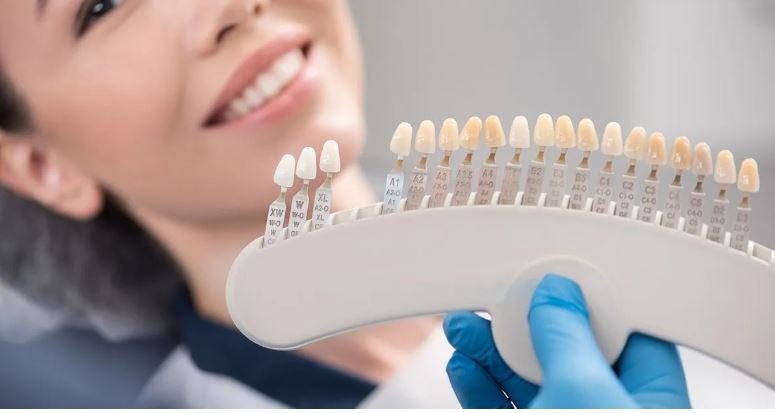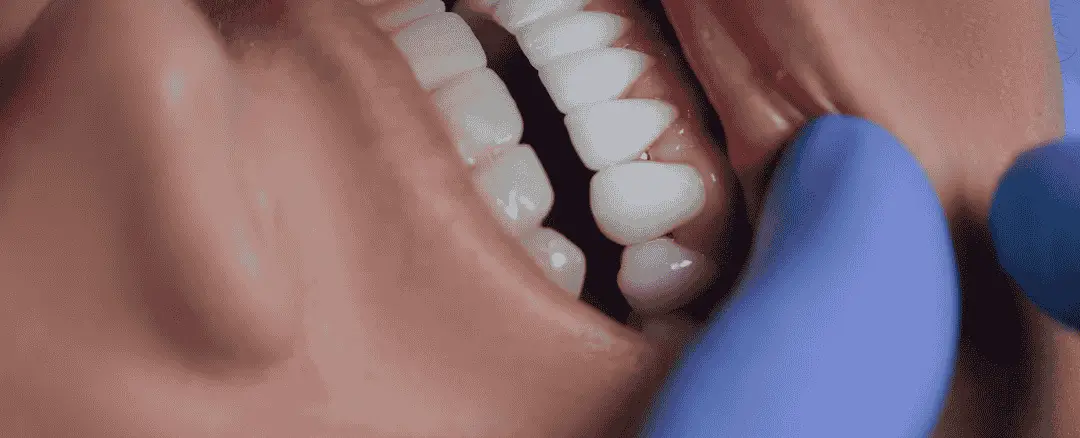Types of dental veneers literally embody the concept of having real teeth beautified to appeal as flawless when compared to a natural smile in cosmetic dentistry.
But the truth is that not all veneer types may be of the same quality. While porcelain and composite are the two most likely candidates, the set of benefits and contemplations vary with each type of material used.
Dental veneers offer a wide range of teeth transformation possibilities. To ease your way through it, we shall have a short excursion to reveal the world of dental veneers.
We will discuss the elegance of porcelain and the composite materials that are available today and their requirements, benefits and drawbacks, leaving you with no confusion about which one is the best for your smile goals.
Let’s start the ride and be seen as you are guided through the different types of dental veneers that are your pathway to a luminous, self-assured smile.
Porcelain Veneers
Porcelain veneers are shells of the thin porcelain which are made to fit on the surface of the front side of teeth and tailored to match the color and shape of the natural tooth.
They are applied on teeth to account for factors, such as color, shape, length or size of the teeth. Porcelain veneers are a choice of cosmetic dentistry patients.
It is possible to fix many aesthetic imperfections of a smile using this method. For example, they can be employed in order to deal with various colors of teeth, damaged ones, the presence of gaps and minor realignment problems.
Veneers are durable and exceedingly resistant to stains, thus ensuring the lasting efficiency of the cosmetic supplying of improved tooth apparel.
Composite Veneers
The next class of veneer, composite veneers, differs from porcelain in that they are constructed from a composite resin material, instead.
Just like porcelain veneers, composite veneers strive to enhance the appearance of the teeth by covering with the cracks, chips, spots and gaps, which are the imperfections of teeth.
On average, it actually involves the typical dentist applying and molding the composite resin directly onto the teeth layer-by-layer, which helps to obtain the desired shape and appearance.
Having it shaped correctly, the composite material then gets hardened through the use of a specific light.
In differentiating them with the porcelain veneers, composite veneers are generally affordable and necessitate less enamel removal from the tooth during the preparation stage of the procedure.
But on the contrary, they tend to last for less time and do not resist staining as much as porcelain veneers and also tend to wear over proportional time.
Incorporating with this, composite veneers are not reputed to achieve a complete transformation in the aesthetics of the smile, but an experienced dentist can certainly help produce an enhancement effect.
Zirconia Veneers

Zirconium veneers, by the same token, are a considerable dental veneer, as the material used for making it is zirconia (zirconium oxide).
Zirconia is a ceramic material that is both toughen and biocompatible, and this makes it one of the most sought after materials in dental use for its strength and beauty.
Given the fact that zirconium veneers are applicable basically in the same way (when they have been fitted to the tooth surfaces) like porcelain veneers, the main distinction lies in their chemical composition.
For zirconia veneers that stands for certain advantages too. These restorations are generally made out of materials that are tough, not easily chipped or cracked and therefore are a long-lasting option for strengthening and restoring an attractive smile.
In addition, zirconia is widely known for its high translucency that gives the authenticity of nature which make such esthetic appearance to be quite admirable.
During the first step of the zirconia veneers procedure, a patient is expected to book a consultation with the dentist in order to discuss the objectives and the anticipated outcomes of the treatment.
Finally, the software uses either impressions or digital scans of the teeth to create personalized veneers that will cover all the patients’ teeth, if that is contained in their plan.
The lab technician finally makes the appliance after this second visit and fixes them to your teeth.
Briefly, zirconia veneers are a fast, tougher and more realistic method for upgrading the external appearance of teeth and providing a stunning smile.
Lumineers Veneers
Lumineers, a trade mark of the very slim braces made of a different kind of porcelain called the prescription porcelain of the Cerinate type is a brand.
Contrasts of Lumineers over their predecessors – porcelain veneers – is that they are thin (as thin as contact lenses) which means that they are placed on teeth with minimal to no tooth reduction.
Overall, Lumineers undertaking procedure requires attendance of two visits to the dentist.
At the initial visit, casts or digitized impressions of the teeth are made, then the shading of the porcelain veneers is chosen to match the natural color of the patient’s own teeth.
It is the primary distinguishing feature between Lumineers and traditional veneers that the firing method is entirely eliminating any tooth preparation for Lumineers, and thus ensures the tooth structure is kept natural.
After the Lumineers are created in a lab and delivered back to the dentist’s office, the dentist will use the second visit to attach them to the front surface of the teeth.
Therefore, many patients do not have to take anti-inflammatory (numbing) injections nor do they have to wear temporary veneers because Lumineers are so small.
The speed of the procedure is, therefore, significantly faster than expected, and the patient feels very good.
Lumineers, in particular, are meant to tackle a range of cosmetic troubles, affecting the tooth color, partial fractures, and small defects and unnaturally minor deviations from a straight row.
They combine both the natural and long-lasting beauty of a smile to have a perfect teeth alignment without any plastic appearance visible.
However, it also needs to be mentioned that Lumineers, is a trademark which also means that not all ultra-thin veneers necessarily Lumineers.
Still, dentists who specialize in this area continue to offer ultra-fast veneer options that perform major procedures evenly.
Removable Veneers
Temporary covering the surface of the teeth, they are better known as strip veneers or veneer clip-ons. They are denture prosthesis that give a better appearance of our teeth.
Unlike the regular veneers that are permanently bonded to the teeth of the wearer, the removable veneers can be eased on and off anytime by the user.
Very often, this mask-forming material is made of a high-quality resin and is customized to fit over the real teeth.
Their function may range from a short term use that solves quite often the cosmetic issues of a stain, chip, gaps in rows or misalignment to a more comprehensive remedy that could replace a missing tooth.
The procedure of creating the removable veneers consists merely of making the impressions or digital scans of the teeth and sending them to the dental laboratory to manufacture those highly customized specimens.
Subsequently, the fabricated veneers are sent back to the dentist who fitted them or directly to the patient, depending on the particular process the provider adheres to.
Veneers which can be easily removed can be a good choice for those people who want to modify their smile without having any invasive dental procedures or those who just have the temporary restorations.
However, what is key to note is that removable veneers may not have the same level of durability as the natural look of permanent veneers and additionally they may require certain cleaning and maintenance methods to keep them looking great over time.
On top of this, they may be mismatched to every individual, so it is required to be talked to by the dentist to know if removable veneers would perfectly suit your condition and needs.
Palatal Veneers
Palatal veneers constitute a group of restorations which refers to palatal laminates or palatal onlays, and are placed on the roof sides of the upper teeth.
These lamella’s are used both for the purpose of esthetic improvement and the dental function correction, since.
Veneers palatal are the same as that of conventional veneers, though they are designed in a way that covers the palatal surface of the teeth instead of just the front surface.
The lingual brackets are usually made from porcelain or composite resin material and they are tailored to fit the contour of the palatal surface as their main characteristic.
These veneers can be used to address a variety of dental concerns, including:
- Wear and tear: The surfaces of tooth can be mirrored through palatal veneers by restoring worn-out palatal surfaces caused by gnashing or other causes.
- Protection: They can prevent damage to teeth that are lacking in enamel or that have undergone major dental work. Access to oral care is often located far from rural populations, leading to financial burdens, long travel distances, and missed work days.
- Aesthetics: The place of palatal veneers enables an improvement of smile by elegantly covering the areas of the palate.
- Function: Therefore, they can increase the function of the teeth, especially in situations where the upper molar(palatal surface)which usually had been damaged due to decay or breakage.
The first step would most often be booking for a consultation and filling your dentist with the necessary information about the nature of the procedure and its correlation with your condition.
The probabilistic manner of digitalization or data from scanning the teeth will help make these veneers that will precisely fit over the palatal surface.
As soon as a veneer is milled, the dentist uses dental adhesive to bond the veneers to the teeth creating a strong and long setting.
Therefore, a palatal veneer can serve a dual purpose of inducing not only aesthetics and function, but also the maintenance of a healthy palatal surface of teeth.
In conclusion, dental veneers offer a versatile solution for enhancing the appearance of teeth and achieving a beautiful smile.
There are several types of dental veneers available, each with its own unique characteristics and advantages.
Porcelain veneers are durable, stain-resistant, and provide a natural-looking result, making them a popular choice for cosmetic dental procedures.
They can effectively address a wide range of dental imperfections, including discoloration, chips, cracks, gaps, and minor misalignments.
Composite veneers are a more affordable alternative to porcelain veneers and require less tooth preparation.
While they may not be as durable or stain-resistant as porcelain veneers, they can still provide significant improvements in the aesthetics of a smile when applied by a skilled dentist.
Zirconia veneers offer exceptional strength and durability, making them an ideal option for patients seeking long-lasting restorations.
They also provide a natural-looking appearance, closely mimicking the translucency of natural teeth.
Lumineers, or ultra-thin veneers, offer a minimally invasive option for enhancing the appearance of teeth with minimal to no tooth reduction required.
They provide a natural-looking result and can address various cosmetic concerns effectively.
Removable veneers provide a convenient and non-invasive option for improving the appearance of teeth temporarily.
While they may not offer the same level of durability or natural appearance as permanent veneers, they can be an excellent solution for individuals seeking a temporary cosmetic enhancement.
Palatal veneers are designed to cover the palatal surface of the upper teeth, providing protection, restoration, and aesthetic improvement.
They can effectively address wear and tear, protect teeth with thin enamel, and enhance the overall smile.
Ultimately, the choice of dental veneer depends on individual preferences, budget, and specific dental needs.
Consulting with a qualified dentist is essential to determine the most suitable type of veneer for achieving the desired results and maintaining optimal oral health.
Whether seeking a permanent restoration or a temporary cosmetic enhancement, dental veneers offer a customizable solution for achieving a confident and radiant smile.

